Could you have a farm… in your own backyard?
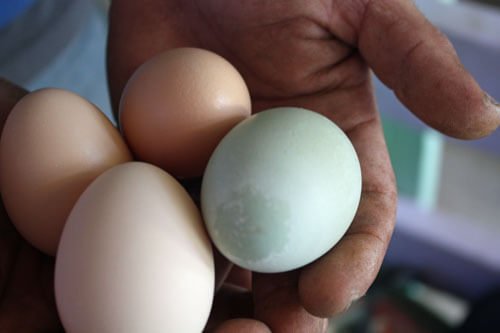
About 5 years ago, I first stumbled upon the “homegrown revolution” and the idea that it was not only possible, but liberating to be able to grow one’s own food. From that first spark, my backyard gardening attempts have continually grown, and I’ve learned how to support local farmers for my meat and dairy, and the produce that I am not able to grow myself.
I wouldn’t say that I have a backyard farm. At this point, I’d call myself a somewhat ambitious suburban gardener, but my passion for growing my own food grows each year as I marvel at the wonder of watching my food go from seed to table, happily count the components of each meal that came from our own yard, and quietly mutter about city bylaws that prevent me from turning the rarely used portion of my backyard into a chicken run.
Today, I’m so pleased to be speaking with Angela England, a woman who shares my love of dirt under her fingernails. A mother of five living in rural Oklahoma with her husband and children, Angela is the Founder of Untrained Housewife. She is the author of Backyard Farming on an Acre (More or Less). She loves empowering others with whatever is the next step on their self-sufficiency journey but calls herself a get-it-done’ist, not a purist.
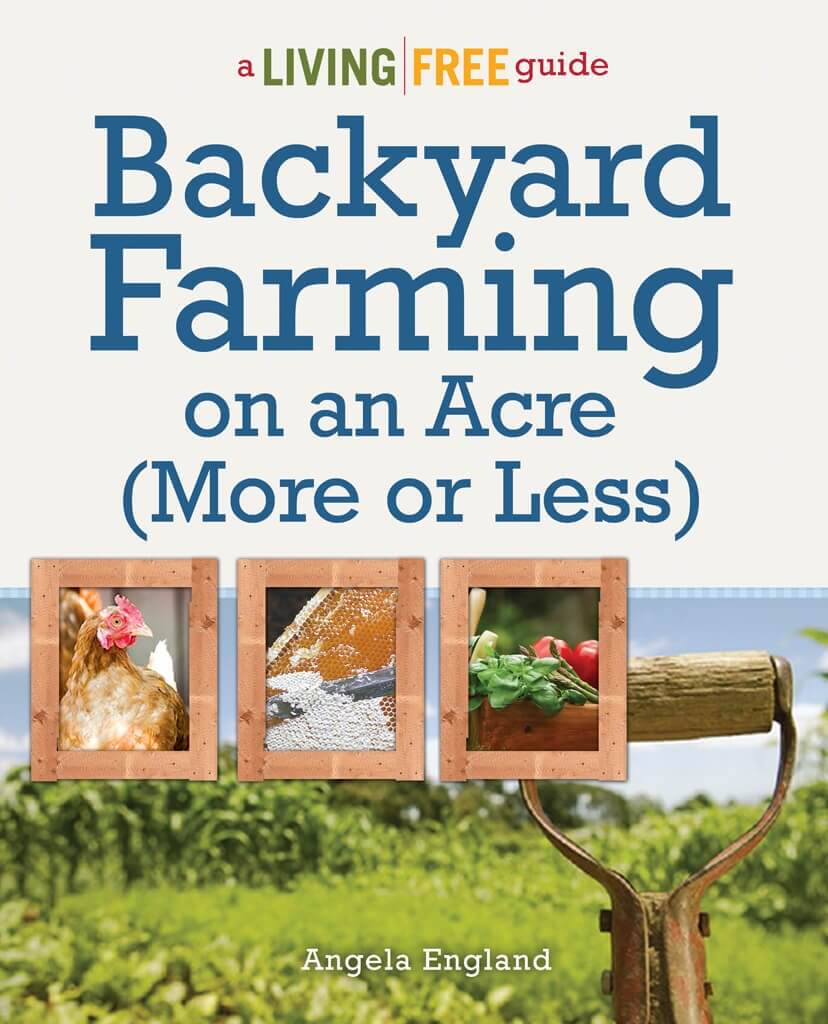 Her new book, Backyard Farming on an Acre (More or Less) has just launched and we’re talking about food freedom, working with small spaces and extending the season, and the joys of tracking down chickens in the rain…
Her new book, Backyard Farming on an Acre (More or Less) has just launched and we’re talking about food freedom, working with small spaces and extending the season, and the joys of tracking down chickens in the rain…
Stephanie- I’ve watched the trend towards growing and raising our own food, and especially towards more things homemade, increase exponentially in recent years. Why do you think that is? What has caused this small but steady revolution towards growing and making things ourselves?
Angela- For me it was the realization that yes – in some ways I am more “tied down” with a backyard farm, but the sense of freedom is an illusion. When I was buying food in the conventional methods I was tied down to price variations, to food recalls, and to trusting that the hundreds of people handling my food thousands of miles away were all treating it with the respect they should be. Now I am free from any of those worries and potential concerns because I know exactly where my food came from, how it was treated (respectfully!), and what is in it. Or not, as the case may be.
As consumers begin to see the damage caused by this great industrial experiment we are realizing that we’ve taken things too far to the extremes. That sometimes modern advancements are not necessarily the best choice, and that just because we can, doesn’t mean we should.
Stephanie- You mention in the book that you grew up with more of a typical city lifestyle. Tell us a bit about your own journey towards sustainability and your desire to be more self-sufficient, and why your family has made the decision to move towards backyard farming.
Angela- The more I learned about how our food is really grown, raised, or managed, the more I realized something needed to change. I got hooked on the idea of growing something for myself when we had the stray pumpkin seed that took over our backyard when I was kid – I talk about it in the introduction of the book. It really was meeting my husband and seeing how his family lived that opened my eyes to the fact that this was still possible, even in today’s busy modernized culture.
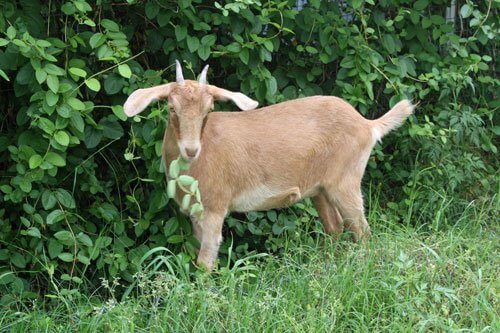
Stephanie- You refer to the hard work of growing food and raising animals. As a backyard gardening myself, I can attest to that on my own small scale. What would you say to someone who wonders whether all the work is really worth it, when it’s so much easier to just go the grocery store?
Angela- I have to tell ya’ I have quit this about a hundred times, the same when I quit being a mother when my kid comes barging into the bathroom while I’m trying to soak in the tub. The chickens don’t go in and I have to track them down in the rain. A fence breaks and we’re trying to keep the goats out of the garden instead of going to church as a family.
But when I sit down to a plate of food and know that every element of it came from our own backyard…that is so priceless. When I see my kids learning important realities about life like treating others with respect, and working hard for what they have, and that good has a value beyond the dollar amount paid for it, it is worth every hassle.
Every lifestyle choice has it’s downside. But at least this way the downside is something I choose. Something I have control over.
Stephanie- Many of us, myself included, are making a move away from Big Agriculture, towards either growing things ourselves or at least supporting more local, small-scale and sustainable operations. Do you think that our choices are having an impact? When we grow or raise our food ourselves, or support local farmers, co-ops, farmer’s markets, CSAs, etc. how do think our efforts affect the bigger picture?
Angela- I definitely think that we are making a difference. And the more we band together to share with each other what we are learning, the better off we will all be. Research and studies are coming out every day and we are getting better at what we do.
In Backyard Farming on an Acre (More or Less) I talk about how we ran this experiment once in our nation’s history. During the victory garden era more than 20 million American homes grew enough fruits and vegetables to produce over 40% of the produce consumed. That is huge! And I believe we can do it again as it becomes less crazy, and more normal to have your own garden and backyard flock in your private homes.
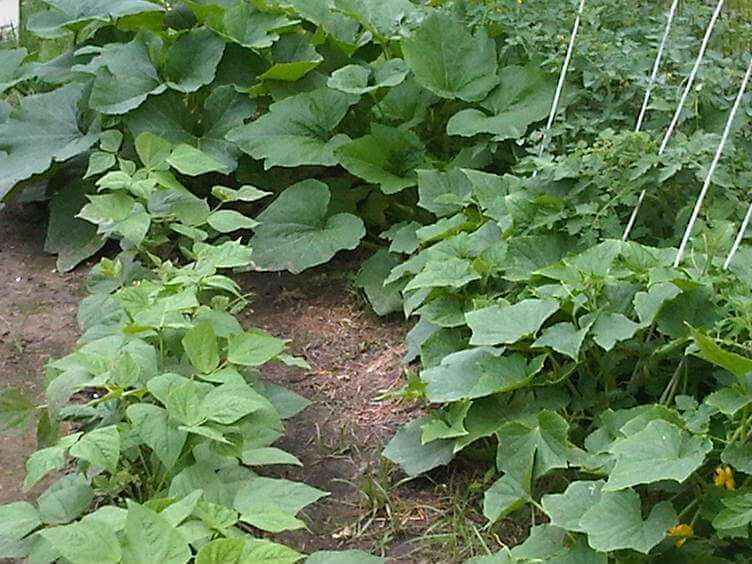
Stephanie- A lot of my readers live in small spaces– apartments, townhouses, mobiles, or teeny tiny city lots. How achievable is this concept of “backyard farming” for those who feel limited by where they live? What would you say to those for whom moving or purchasing land isn’t an option at this point?
Angela- If you can’t produce everything you want to yourself, then support those who are. Do whatever you can but support others who are doing more. Yes, there may be limitations based on your circumstances, but that doesn’t mean you do nothing. I’m having a giveaway right now with a junior sized earth box and mushroom growing kit that are all perfect for very small spaces.
Stephanie- I always get a bit giddy when I look at plans that show how much you could grow on a 1/4 or 1/2 acre lot (and you’ve given some inspiring examples in the book). Our family still lives on property that is only about 1/8 of an acre, and yet summer after summer I am amazed at how much I can grow through my casual backyard gardening efforts. Have you found the same thing to be true? What is your current living situation and how much of your family’s food are you able to provide through your own land?
Angela- Absolutely! We live on about 1/4, very similar to the first diagram in the book. But only about half is in use as a backyard farm while the other half is kids-running-wild space. By extending the growing season both in the early spring, and through all of fall and most of winter, we are able to produce an enormous amount of food. Combined with the beef and pork we source from my in-laws, we produce about 90% of the meat and 50% total of our food. If only I could build an ocean in my backyard I wouldn’t have to buy any meat from the store!
Stephanie- You talk about a lot of different gardening techniques, including vertical gardening, which I have personally found invaluable as a backyard gardener working with a small amount of space. What other types of techniques would you recommend to someone trying to really maximize the space they have and the efforts that they put in?
Angela- I mentioned above about extending the growing season. If you only buy your vegetable starts when the big box stores have them in stock, you are starting too late. Using cold frames, starting seeds early, and covering early spring veggies with a hoop house plastic covering, you’ll have a much bigger harvest.
Interplanting different crops – such as peas grown in with the sunflowers, or beans and corn and squash, can also increase the harvest a great deal. You are getting more than one harvest in the same square footage.
The key with any of these intensive gardening techniques will be to have fertile, healthy soil capable of supporting such a strong harvest. This is where organic methods really excel because the focus on building rich soil makes even micronutrients readily available instead of focusing on just three primary chemicals.
I think that modern intensive gardening techniques are a huge asset for those who live in average or small sized homes and don’t have acres upon acres to sprawl their gardens across. The soil is the key – animals contribute, and plant enhance. There is such an interwoven bond between all the elements of a backyard farm. It is an amazing design.
Want to pick up your own copy or purchase one to give as a gift?
You can buy Backyard Homestead on an Acre (More or Less) now on Amazon. It is also starting to show up in local bookstores around the country.
To celebrate the book launch, Angela is hosting a Party of Prizes from now until Decmeber 18th. There are some amazing prizes, including an Earth Box gardening system, heirloom seeds, Legacy canning jars and Tatter lids, and much more!

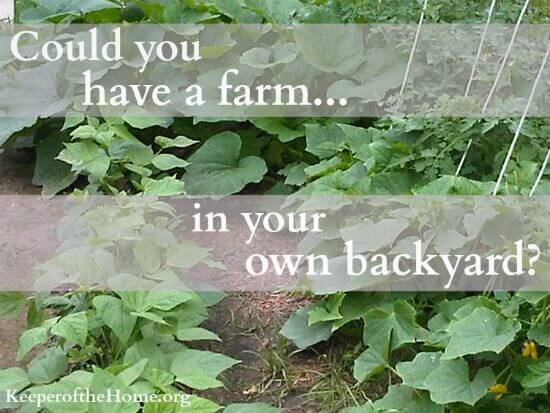
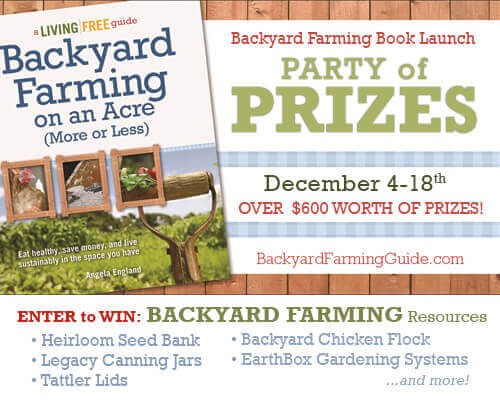
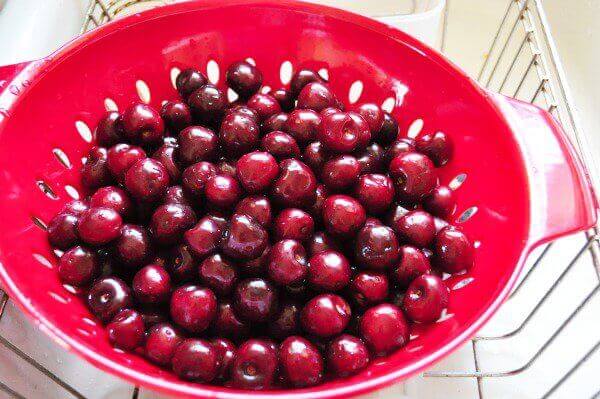
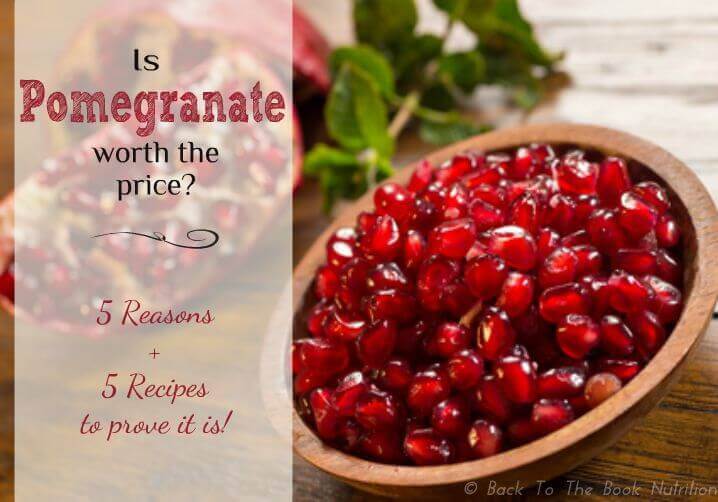



I really want to produce more of my own produce. Last year I tried to focus more on growing as many of the dirty dozen as I could. But I really struggle with fruit. My strawberry harvest was less than satisfactory in spite of the dozens of plants I have, I can’t even get my blueberry plants (those I haven’t killed at least) to produce fruit. We live on a tiny city lot with poor soil and uneven sun exposure so it’s a real struggle. I try to support local growers whenever possible, but it is very expensive to buy locally and obvious much cheaper to grow my own when I can. I really want to add apples but I’m afraid to pay a lot of money for columnar apple trees and then have them die on me.
Strawberries can be tough – I prefer the alpine strawberries which work into a landscape better. I use them in the place of impatiens or coreopsis or other mounding, edging flowers. You’ll need to tuck as many plants into the landscape as possible because they don’t bloom and fruit all at once but rather each plant produces a fruit here and fruit there throughout the entire season. Together they add up to a fabulous and sustained harvest. Note that the berries are small and sweet – not as big as what you’re used to in the grocery store.
Blueberries can take a couple years to become well established. I would also take a soil sample to your local county extension office to make sure you have acidic enough soil for the blueberries because that can make a big difference. Mulching in pine needle can help gently raise the acidity if needed but if your levels are too low you’ll need specific amendments.
My husband is in the military. We just moved into a new house not 4 months ago, and won’t even be here a year; this makes it so hard to produce any of my own food! Especially when we’re moving to Italy in the Summer. Don’t get me wrong, we’re thrilled!!! but I can’t even take kitchen herbs with me there. One day, when we finally settle, I am going to be so excited to start my own backyard farm. Until then, I read, learn and support local agriculture… no matter where we may be!
Cheryn, the first thing I do when I move to a new place is buy herbs if they didn’t survive the trip. I usually grow them in pots so I can take them with me. Right now, they are in large concrete planters on my back porch. Not sure where you are, but I have had my rosemary overwinter (we’re in GA) for the last two years. Another thought is to check Pinterest for re-growing green onions, lettuce etc right in your own kitchen. Oh and sprouts! It’s not quite the same as a backyard garden but it helps a little. 🙂
I was just talking with another gal who lives on base and she said her old base had a large community garden area but her new base doesn’t so she is going to coordinate it. You could ask for land on base to create a community garden!
Thank you for a great interview!
You’re welcome!
So many, us including, do not have land, not even a speck of land. Plus in many areas holding any kind of animals is prohibited. I try to concentrate on what we CAN do. We still grow a lot of our own food! There are always nice people with spare land, so we garden on there property. Sure I would love to have an acre or two, and it is a bit humbling to ask again and again for land, but eh, humility is a good thing :).
What a great idea to garden on other people’s property, if they’re willing to let you. I love that idea!
My in-laws have a cow owned by a family in town. They breed her and feed her in exchange for a small amount each year + some man-hours work fixing fence. The family then gets one calf each year for their own use and it works out nicely. Asking around your local feed store can be a great way to find someone like this. My FIL welcomes the gentleman’s help because he is getting on in years and “doesn’t move as fast as I used to”. 😉
We live in the middle of nowhere with large fields of corn grown around my little town, so we didn’t think much of it to get a few chickens on our two acres– no noisy rooster and we kept them in a pen that we moved around every few days. Our town counsel contacted us and told us to get rid of them. (My parents had as many chickens in their backyard in a big city w/ less than an acre lot w/ no complaints.) We’re planning to move.
It’s definitely frustrating when you have animals and then find out the regulations don’t allow for them. That is one reason I am so careful in the book to highlight the necessity of investigating these things in advance if you have the opportunity to move. Check out Home Owner’s Association rules, do soil testing on a potential property before you invest in purchasing it, etc. These things can save you heart ache down the road.
I have tried gardening in the past and some years have had enough food to can for the winter and other years I don’t have any luck at all. It is hard for me to control the weeds and they always seem to take over the garden. Do you have any suggestions on how to keep weeds from taking over the garden and how to get your children to enjoy gardening?